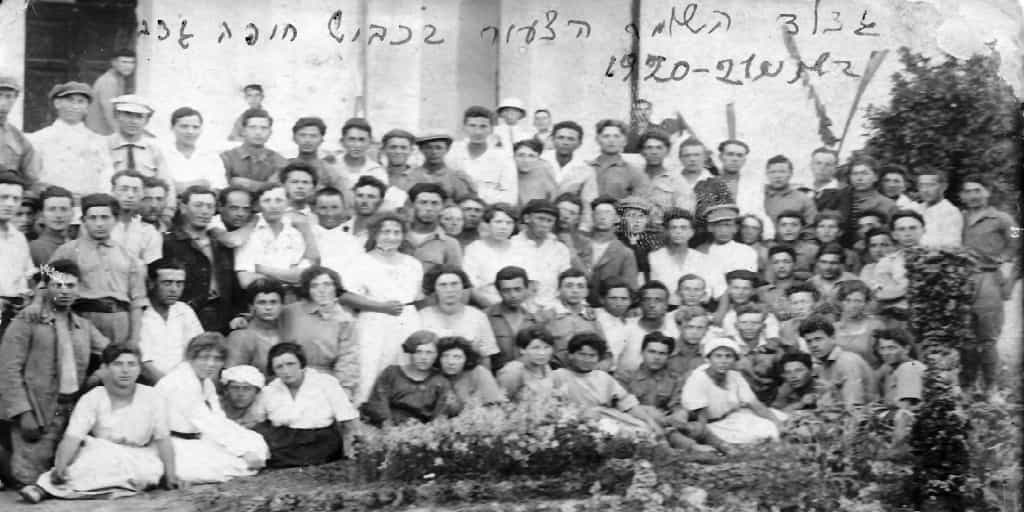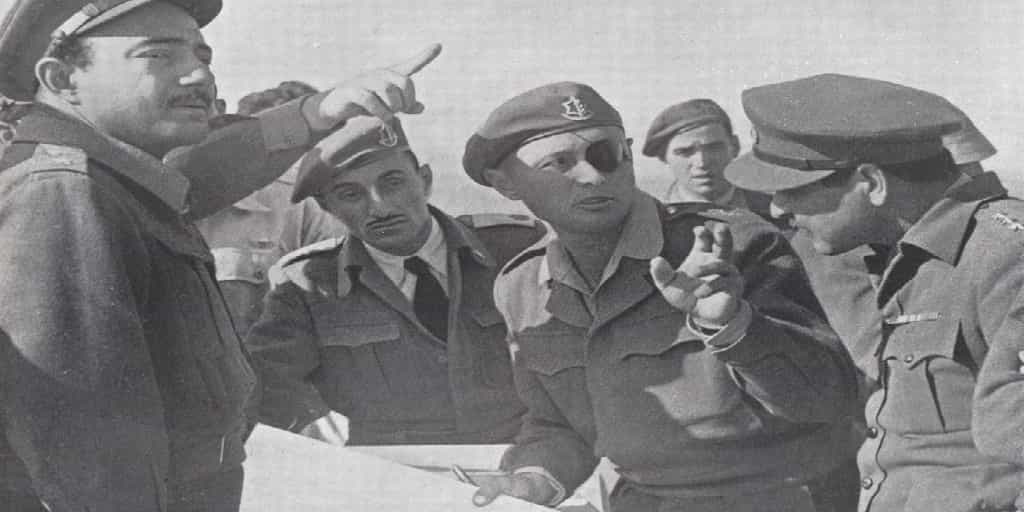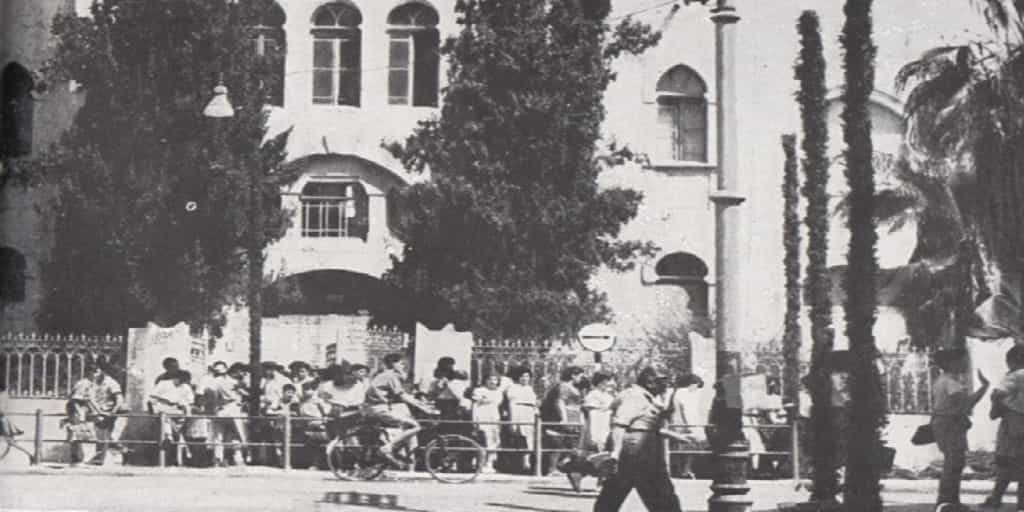An aliyah to Israel is when someone, or a group of people, move to the land of Israel. Before Israel becomes an independent state in 1948, there were five major waves of Jewish immigration to the land. Each is called an aliyah. The First Aliyah is from 1882 to 1902. It is an Aliyah brimming with nationalism and hope for an independent state. The Second Aliyah lasts from 1904 to 1914. The people who move to Israel during the Second Aliyah are responsible for major and essential state building. What about the Fourth and Fifth Aliyot?Don’t worry, both will start soon! Let’s talk about the Third Aliyah to Israel!

Background
The Third Aliyah to Israel began in 1919 and lasted until 1923. It began for several reasons:
- The October Revolution in Russia
- Resulting pogroms in Russia, Poland, and Hungary
- The British Mandate over Palestine beginning in 1917
- The Balfour Declaration published
What happens during the Third Aliyah to Israel?
The Establishment of the Kibbutz
It is during the Third Aliyah that the Kibbutz is established. This can be confusing because when we talked about the Second Aliyah, we talked about the Kvutza. The Kvutza of the Second Aliyah is the mother of the Third Aliyah Kibbutz.
The Kibbutz is a socialist agricultural center. Kibbutzim spread throughout the country and are the driving force behind turning the country green. Everyone shares all material goods. Those material goods are not owned by the people, but by the kibbutz: the homes, farming tools, food, clothes, and more!
Israel’s leaders will be born in the Kibbutz: Yigal Alon, Yitzhak Rabin, Ariel Sharon.
The Kibbutz will change throughout history. It begins with a children’s home, where all of the children lived and grew up. They knew who their parents were, and saw them throughout the day, but stayed in the children’s home until they turned eighteen years old.
In 1921, Yehoshua Hankin bought the Jezreel Valley, which will lead to the explosion of the Kibbutz throughout the north. That same year the first kibbutz was built by thirty- five young people- Kibbutz Ein Harod is established.
However, as time goes on, families begin to dislike this idea, and protest the children’s home. It will be the first thing to go as the kibbutz evolves.
Today, kibbutzim are spread across the country from the very north of the country to outside of Eilat in the south. But their influence on the state of Israel has decreased. They are still significant sources of agriculture.
The Establishment of the Moshav
The Moshav is established during this Aliyah as well. It was a response to the kibbutz. Some of the members of the kibbutz decided the whole idea of the kibbutz was too much for them.
They loved the idea of agriculture and shared profits, but they wanted a little more privacy than what existed on the kibbutzim they came from. So what did they do? They found a middle ground. The moshav was a compromise between the socialist kibbutz and the capitalist moshava, town, or city. The moshav was an agriculturally focused town and the profits of products were shared equally for all of the moshav’s residents.
However, everyone will own their own tools, homes, clothes, etc. Children will be raised at home. Privacy will be placed as a higher value than at the kibbutz. Who were one of these families? The Dayan family! Later on Moshe Dayan will become one of the leading commanders of the IDF, Israel’s armed forces.
Pioneers built the first moshav in September 1921, and named Nahalal. Richard Kaufmann designed the special town, using very avant-garde architectural styles from Germany. The moshav looks like a circle within a circle four times over. The first circle was for public services and centers, followed by the residents’ homes, and then farmland.
One of Nahalal’s founding members was a young man name Shmuel Dayan. His son would one day become one of the country’s most important figures, Moshe Dayan. Moshe Dayan became chief of staff for the Israel Defense Forces, archeology enthusiast, and more!

National Projects of the Third Aliyah to Israel
During the Third Aliyah to Israel, many national projects are underway. While the Second Aliyah is one of state building with political parties, banks, and the medical system, the Third Aliyah is one physical state building with draining the swamps in the northern part of the country, building roads, and more!
The draining of the swamps
The northern part of Israel in the early 1900’s was almost complete swampland. The marshes weren’t nice areas to live because they were filled with mosquitos and malaria.
When Jewish communities buy land in the north, they will have to work tremendously hard to drain the swamps. They planted eucalyptus trees because the eucalyptus tree needs a lot of water to grow. This helps drain the swamps, and we can see those eucalyptus trees in today’s landscape as a result.
Many people will get sick from malaria while working the land. There wasn’t any vaccination, and very little medical treatment to help the sick. A lot of the sick will die from malaria.
But their friends and family don’t give up and won’t leave the area until they succeed. We have to remember the people of the Third Aliyah believed with all of their hearts and souls in creating a Jewish state. No one was going to tell them no.
The building of the roads
With the help of the British Mandate, the Jewish leadership will build roads throughout Palestine.
But, wait! You said the Third Aliyah to Israel was from 1919 to 1923? Palestine is only building roads then?!? We have to remember up until this point Palestine was in the Ottoman Empire, and it was at the outer edge of the Empire. No one was paying enough attention or resources to build roads in a part of an Empire so much on the edge.

The Zionist movement finally gained the financial resources to build road during the British Mandate.
This will change the landscape of the land. It will now become much easier to travel and get to places, whether it is to visit family and friends, buy groceries or things you need for daily life, or to see the holy sites of Jerusalem!
The Haganah
The Haganah was an essential institution for the yishuv until 1948, when it evolved to become the Israel Defense Forces. In the years 1920 and 1921, Arab riots broke out throughout Palestine. The riots were protesting the Jewish economic competition, and were in fear of the changing reality around them. The Arab population understood that the Jewish immigration wasn’t going to stop, and felt threatened by this reality.
But the riots were also very violent against the Jewish population of Palestine. When the riots quieted down, the Jewish leadership realized that the British Mandate was not going to ensure the safety of the Jewish population.
The result is the establishment of the Haganah in 1921. Haganah is the Hebrew word for defense. It was their goal to protect the Jewish farms and kibbutzim throughout the area from attacks. While the Haganah begins as small units, primarily made up by farmers watching guard, and with little central coordination, it will grow into an organized force over the coming years.
By 1948, it is so organized that the Haganah is the clear choice as the father of Israel’s modern military.
Relations between the Jewish and Arab Communities
The relations between Jews and Arabs were positive, despite the Arab Riots toward the Third Aliyah to Israel. Jews and Arabs taught each other different farming techniques.
Bedouins guarded Jewish kibbutzim, farms, and towns. Arabs learned in Jewish schools. Coexistence and insistences of working together did exist…. and happened fairly regularly.

Conclusion
The Third Aliyah to Israel is an impressive time period for the building of the State of Israel. With the basis that the previous two aliyot provided, the people of this aliyah can focus on the stable formation of their state. Forty thousand (40,000) Jews arrived in Palestine during the Third Aliyah. They will ask how they can help the state. This is important because it later becomes an ethos within Israel.
A close-knit, intimate society is established during the Third Aliyah to Israel, and that is something we still see today. Israel still sees herself as one big family, just as it did over ninety years ago.





